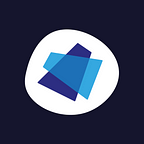Instructional Design and Content Creation — The Chalkboard Education Way
Edtech goes beyond converting physical textbooks into digital ones. Instead, Edtech solutions, such as what Chalkboard Education offers, take these learning materials, revise them and break them down into understandable parts for learners.
To do this, an important characteristic is present: instructional design. This article will walk you through instructional design and how Edtech providers utilize it to create course content via Edtech solutions, using Chalkboard Education as a case study.
What is instructional design?
Instructional design is the development of instructional materials by considering the ways students learn and how to deliver learning materials and techniques in a way that best suits them.
The Magic Triangle of Instructional Design
There is a sweet spot between learning considerations and making instructional design effective. This spot is often called the “Magic Triangle of Learning.”
Learning Objectives
The first is learning objectives — What is the end goal of a student studying a particular course or topic? What could a student not do before taking the course or subject that they can do now after taking it? This should be explicit to determine the activities that go into the lessons. Also, these objectives should have metrics attached to them so you can measure whether they are successful or not.
Learning Activities
And that brings us to the second consideration, learning activities; based on the learning objectives, what actions best achieve that goal? For example, suppose a learning objective is to make students appreciate a particular mathematical formula. In that case, the activities could be practical where the formula is integrated to make students value its use. These activities can be widely varied, and using ones that suit the learners’ learning styles is best. These can include written, audio, and visual formats, including gamification and simulations.
Learning Assessments
After doing all the above, how is one sure that the students grasp or retain what they learn and fully understand it? How does one ensure that you are meeting objectives? That is where learning assessments come in — We will determine the difficulty of these assessments by the goals and the chosen activities. Reviews can be summative, which determines results based on a graded basis. They can also be formative, which measures a student’s progress throughout their learning journey.
Instructional Frameworks
A popular instructional framework is ADDIE, an acronym for Analysis, Design, Development, Implementation, and Evaluation. Using these pointers helps develop courses.
Analysis
The next step involves analyzing existing learning material before creating a course to understand what the learning environment is like and the knowledge and skill levels of the students. At Chalkboard Education, we send out a survey before we create our community courses to understand what kinds of material the target audience wants to learn. Another way we carry out this analysis at Chalkboard Education is through observation, by observing what people are currently following and the trending topics. These aid in setting out the learning objectives of the course.
Design
This part focuses on selecting the learning objectives, learning assessments, the content of the course, and how it will be delivered. At Chalkboard Education, once topics are chosen for a particular lesson, the next step is breaking it down into readable modules, which will make the subject easier to understand. Then, the team researches for information on the subject matter using credible and relevant sources.
Development
This section deals with creating and assembling the assets chosen in the Design Process. It also includes an iterative process of testing that these design elements are good to go. Still using Chalkboard Education as an example, to make the courses more interactive, there is the use of images, GIFs, drop-down menus, and other interactive features, making the design more engaging. Before we roll it out to the general public, several tests are done in-house with users, and based on feedback; iterations are made.
Implementation
This stage focuses on ensuring that the learning material lands in the hands of the intended users. At Chalkboard Education, interested users can access the courses free through the web and mobile applications.
Evaluation
After students have used the software to learn, the effectiveness of the modules needs to be analyzed. Chalkboard Education incorporates feedback surveys into its instructional design during and after each course. This feedback helps the courses’ developers improve on new and existing lessons to ensure they best suit the target audience.
Conclusion
Instructional design is highly beneficial in course creation and ensuring learners learn in ways that best suit them. When creating a course using instructional design, developers must establish the “magic triangle” is formed. They must find the intersection of developing learning objectives, learning activities, and assessments.
There are five simple steps Chalkboard Education follows to get these, which can benefit anyone looking to create courses. Analyze the pre-existing learning environment, then design what the course objectives and content will be. Then develop the assets for that course and make it as interactive as possible to engage the learners. Implement the ready-to-roll-out course on the preferred platform, and lastly, evaluate the success of the course.
About Chalkboard Education
Chalkboard Education provides a mobile-based, offline-first Learning Management System tailored for underserved communities' training. Lightweight, inclusive, and complete with full analytics capabilities, Chalkboard Education helps you reach your beneficiaries everywhere in the World, seamlessly. Currently used in 12+ countries in Africa, South and North America, Chalkboard Education is available worldwide.
